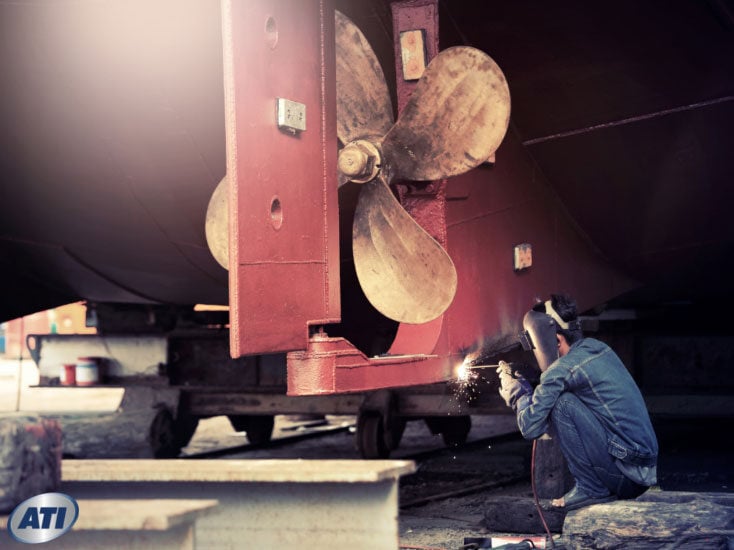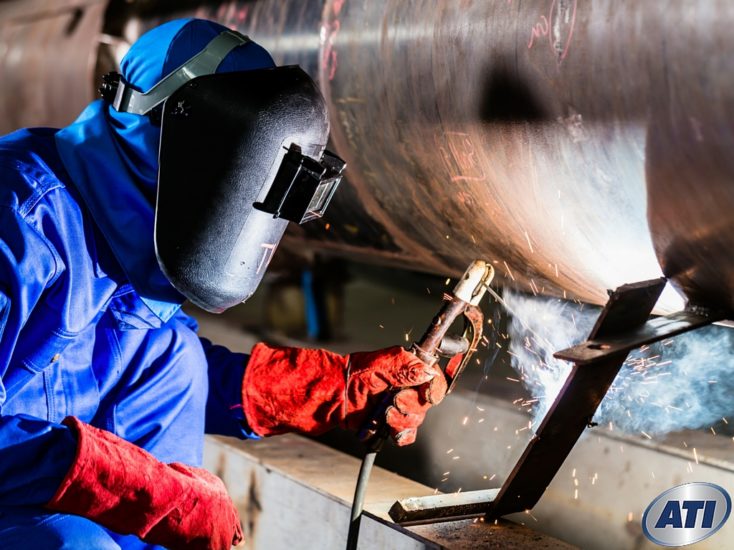Aluminum Welding
Aluminum welding is a specialized skill within the welding industry, known for its unique challenges and requirements. Unlike steel, aluminum has distinct properties that necessitate specific techniques and equipment to ensure strong, reliable welds. Aluminum welding can be challenging but rewarding due to its unique properties and wide range of applications.
-
How to Weld Aluminum?
-
Can you Weld Aluminum?
-
Can you Weld Aluminum to Steel?
-
Can You Stick Weld Aluminum?
-
How to TIG Weld Aluminum
-
Can You MIG Weld Aluminum?
-
Can You Weld Cast Aluminum?
-
How Does Welding With Aluminum Differ from Welding With Steel?
-
How to Clean Aluminum Before Welding
How to Weld Aluminum
Welding aluminum requires specific techniques and equipment due to its high thermal conductivity and oxide layer. These are a few detailed steps:
Cleaning:- Remove Surface Contaminants: Use a degreaser or solvent like acetone to remove oils, grease, and other contaminants from the surface.
- Remove Oxide Layer: Use a dedicated stainless-steel brush to clean the weld area. The oxide layer on aluminum has a much higher melting point than the aluminum itself, so it must be removed before welding.
- Set Up Welding Equipment: Ensure you have the appropriate welding equipment for aluminum (TIG or MIG welder).
- Select Filler Material: Choose the correct filler rod or wire for your specific aluminum alloy. Common filler materials are ER4043 and ER5356.
- Set Welding Parameters: Adjust the settings on your welder for aluminum, typically using higher amperage and AC mode for TIG welding.
- Tack Weld: Make small tack welds to hold the pieces in place and ensure proper alignment.
- Perform the Weld: Maintain a consistent travel speed and angle. For TIG welding, use a back-and-forth motion to control the heat input and avoid overheating the aluminum.
- Remove Residues: Clean the welding area again to remove any flux residues or contaminants.
- Inspect Welds: Check for any defects such as porosity, cracks, or incomplete fusion.
Can You Weld Aluminum?
Yes, aluminum can be welded using various methods such as TIG, MIG, and even stick welding with the right techniques and equipment. However, each method has its own specific considerations.
Can You Weld Aluminum to Steel?
Welding aluminum to steel is not straightforward due to differences in melting points and thermal conductivity. However, there are specialized techniques to achieve this:
- Bimetallic Transition Inserts: Use transition materials like bimetallic strips that are pre-bonded to facilitate the welding of aluminum to steel.
- Explosive Welding: A high-energy process that bonds aluminum to steel by detonating an explosive.
- Brazing: Use a brazing technique with a filler material that can bond aluminum to steel.
Can You Stick Weld Aluminum?
Stick welding aluminum is challenging but possible with specific electrodes designed for aluminum. It is not commonly used due to difficulties in controlling the weld quality and the need for higher skill levels.
- Electrode Selection: Use aluminum stick electrodes such as E4043 or E5356.
- Welding Technique: Use a short arc length and maintain a consistent travel speed. Preheat the workpiece if necessary to improve weld quality.
How to TIG Weld Aluminum
TIG welding is ideal for aluminum due to its precision and control. This is a beginner’s guide to TIG welding:
Set Up the TIG Welder:- AC Mode: Use alternating current (AC) to break up the oxide layer and ensure proper fusion.
- Shielding Gas: Use pure argon gas, typically at a flow rate of 15-20 cubic feet per hour (CFH).
- Electrode Type: Use a 2% seriated tungsten electrode for its stability and performance.
- Electrode Preparation: b Sharpen the tungsten to a fine point for better arc control.
Clean the Aluminum: Use a stainless-steel brush dedicated to aluminum to remove the oxide layer.
Weld:
- Arc Length: Maintain a short arc length to prevent contamination and control heat input.
- Filler Rod: Use the correct filler rod (e.g., ER4043 or ER5356) and feed it into the weld pool at a consistent rate.
- Travel Speed: Move the torch steadily and avoid overheating the aluminum, which can cause warping and burn-through.
Can You MIG Weld Aluminum?
Yes, MIG welding aluminum is possible and often used for thicker materials. Steps include:
Set Up the MIG Welder:- Spool Gun: Use a spool gun to reduce the feeding issues associated with soft aluminum wire.
- Shielding Gas: Use pure argon or an argon-helium mix to improve arc stability and penetration.
- Wire Type: Commonly used wires are ER4043 and ER5356.
- Wire Diameter: Choose a wire diameter suitable for the material thickness, typically 0.030 or 0.035 inches for most applications.
Clean the Aluminum: Remove any oxide layer and contaminants to prevent weld defects.
Weld:
- Push Technique: Use a push technique to avoid contamination and ensure good penetration.
- Voltage and Amperage: Adjust the settings on your MIG welder to provide enough heat for proper fusion.
Can You Weld Cast Aluminum?
Yes, cast aluminum can be welded, but it requires special considerations due to its porosity and potential impurities. Here are some tips:
- Preheat the Cast Aluminum: Preheat the cast aluminum to around 300°F (150°C) to reduce the risk of cracking.
- Use a Suitable Filler Rod: ER4047 is often preferred for cast aluminum due to its higher silicon content, which helps to fill voids and reduce cracking.
- Clean Thoroughly: Remove any oil, grease, and oxide layer from the surface to ensure a clean weld.
How Does Welding with Aluminum Differ from Welding with Steel?
Welding aluminum differs from welding steel in several ways:
- Oxide Layer: Aluminum forms an oxide layer that must be removed before welding, while steel does not.
- Thermal Conductivity: Aluminum dissipates heat quickly, requiring higher heat input compared to steel.
- Melting Point: Aluminum has a lower melting point (around 1220°F) compared to steel (around 2500°F), necessitating careful heat control to avoid burn-through.
- Shielding Gas: Pure argon is typically used for aluminum, whereas steel may use argon-CO2 mixes.
- Weld Appearance: Aluminum welds tend to be shinier and more reflective than steel welds.
How to Clean Aluminum Before Welding
- Cleaning aluminum is crucial to prevent contamination and ensure a strong weld:
- Remove Grease and Oil: Use solvents like acetone or isopropyl alcohol to clean the surface.
- Remove Oxide Layer: Use a stainless-steel brush dedicated to aluminum or a chemical cleaner designed for aluminum.
- wipe Down: Use clean rags or wipes to remove any residual contaminants before welding.
Conclusion
Welding aluminum can be a rewarding skill, offering a range of applications from automotive to aerospace industries. By understanding the specific techniques and considerations required for aluminum welding, you can achieve strong, high-quality welds. Whether you are TIG or MIG welding, or even attempting to weld cast aluminum, proper preparation and technique are key to success.
Industry Knowledge
Welcome to the Advanced Technology Institute's Blog, your resource for industry insights and discussions on technologies shaping the future of automotive, heavy vehicle, hvac, welding, and other related career paths.
Explore how ATI's curriculum and hands-on learning opportunities can propel your career in the tech-driven world.
%201.jpg)



